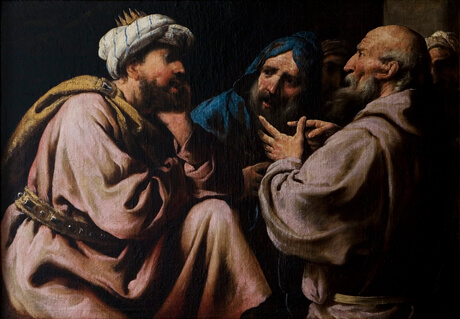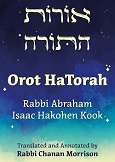
“Korach was a clever fellow — what did he see to get involved in this folly? His mind’s eye fooled him. He saw by prophetic vision that a line of great men would descend from him, including the prophet Samuel, who was the equal of Moses and Aaron together.” (Midrash Tanchuma 5)
While the Midrash appears to belittle Korach’s dispute as foolish, the argument that Korach put forth — “All of the congregation is holy, and God is in their midst” (Num. 16:3) — does not seem silly at all. Is not Korach simply restating what God told the entire nation, “You shall be holy, for I, the Lord your God, am holy” (Lev. 19:2)? What was so wrong with his claim? Why did Moses insist that only Aaron and his descendants could serve as priests?
Korach’s mistake is rooted in the dialectic between two distinct forms of divine providence: inclusion (kirvah), and selection (bechirah). During certain periods, the service of God was inclusive, available to all. At other times, God chose certain persons or places to bear a higher level of sanctity, in order to elevate the rest of the world through them.
The Temple and the Bamot
One example of the historical give-and-take between these two conflicting approaches is the status of bamot, private altars for bringing offerings to God.
Until the Tabernacle was set up in Shiloh, individuals were permitted to offer sacrifices on private altars throughout the country. During the 369 years that the Tabernacle stood in Shiloh, these bamot were prohibited, and all offerings had to be brought to the central service in Shiloh. After the destruction of the Shiloh Tabernacle, the bamot were again permitted. With the selection of the city of Jerusalem and the building of the Temple on Mount Moriah, however, the bamot were banned forever.
When permitted, these private altars could be established in any location. They allowed all to approach God; even non-priests could offer sacrifices. The periods when bamot were permitted reflect an inclusive form of divine worship, enabling all to approach God and serve Him.
For the service in the Tabernacle and the Temple, on the other hand, only the descendants of Aaron were allowed to serve. When Shiloh and later Jerusalem were chosen to host the Holy Ark, the divine service was limited to the boundaries of those cities and their holy structures. Unlike the bamot, which were accessible to all, the Tabernacle and the Temple were enclosed buildings, set apart by walls and barriers. The various levels of holiness were spatially restricted. Thus the Talmud (Yoma 54a) teaches that the Shechinah was confined to the space between the two poles of the Holy Ark.
Pillar Service
A second example of the contrast between these two approaches may be seen in the use of a single pillar (matzeivah) to serve God. The pillar was an open form of worship, attracting people to gather around it, without walls or restrictions. This form of Divine service was appropriate for the time of Abraham, who tried to spread the concept of monotheism throughout the world.
In Moses’ day, however, serving God through pillars became forbidden (Deut. 16:22). After the election of the Jewish people, it became necessary to first elevate the people of Israel. Only afterwards will the rest of the world attain recognition of God. Divine service thereafter required boundaries — the walls of the Tabernacle and Temple — in order to cultivate the holiness within.
Prophecy Only in Israel
A similar process took place regarding prophecy. Until the Sinaitic revelation, the phenomenon of prophecy existed in all nations. At Sinai, however, Moses requested that God’s Divine Presence only dwell within the people of Israel: “[If You accompany us], I and Your people will be distinguished from every nation on the face of the earth” (Ex. 33:16; see Berachot 7a).
While the boundaries created by the selection of Jerusalem and the Jewish people will always exist, the distinction of Aaron’s descendants as Kohanim is not permanent. In the future, all of Israel will be elevated to the level of priests. God’s declaration to Israel, “You will be a kingdom of priests and a holy nation to Me” (Ex. 19:6), refers to this future era.
Korach’s Vision
As the Midrash explains, Korach was misled by his prophetic vision. He discerned the essential truth, “All of the congregation is holy, and God is in their midst.” Yet the time for this vision belongs to the distant future. Korach only saw a private vision — ruach hakodesh — not a universal prophecy meant to be publicized and acted upon.
Moses alluded to the future nature of Korach’s vision when he dictated the type of test to be used. The dedications of the Kohanim and the Tabernacle involved sin-offerings and burnt- offerings, so it would have been logical to suggest that Korach’s men attempt to offer similar offerings. Moses, however, suggested that they offer incense. He hinted that Korach’s vision reflected an underlying truth, but one for the distant future, when sin-offerings will no longer be needed to atone for our wrongdoing.
(Gold from the Land of Israel, pp. 252-255; Adapted from Shemuot HaRe’iyah, Korach (5691/1931))
Illustration image: ‘Moses and Aaron with Pharaoh’ (Pietro della Vecchia, 1626)





